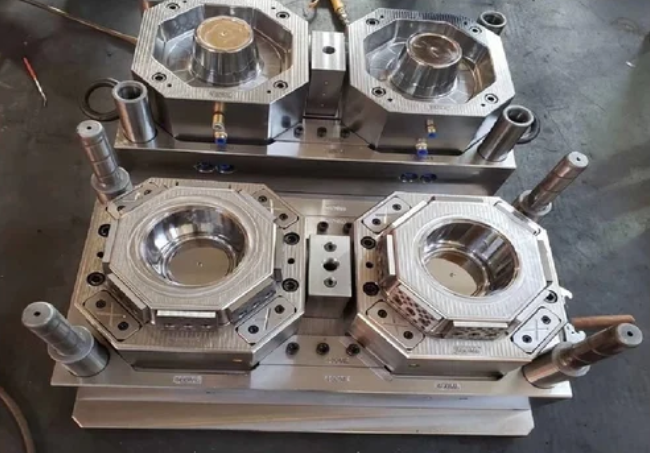Exploring the Innovations in Automotive Mold Design and Manufacturing
Introduction:
Automotive mold design and manufacturing play a crucial role in the production of vehicles. These molds are responsible for shaping various parts of a car, such as the body panels, interior components, and engine parts. Over the years, there have been significant advancements in mold design and manufacturing techniques, leading to increased efficiency, accuracy, and cost-effectiveness. This article will explore some of the latest innovations in automotive mold design and manufacturing.

1. Computer-Aided Design and Manufacturing (CAD/CAM):
One of the most significant advancements in automotive mold design and manufacturing is the use of computer-aided design (CAD) and computer-aided manufacturing (CAM) software. CAD allows designers to create detailed 3D models of molds, making it easier to visualize the final product and identify any potential issues. CAM software, on the other hand, enables manufacturers to program and control automated machinery, ensuring precise and consistent mold production. The integration of CAD and CAM has revolutionized the mold design and manufacturing process, leading to improved quality and reduced lead times.
2. Additive Manufacturing (3D Printing):
Additive manufacturing, commonly known as 3D printing, has gained popularity in various industries, including automotive mold design and manufacturing. 3D printing allows designers to create complex mold structures with intricate details that are difficult to achieve using traditional methods. This technology offers several advantages, such as reduced material waste, faster production times, and the ability to create prototypes quickly. Additionally, 3D printing enables manufacturers to produce molds with improved cooling channels, resulting in more efficient and cost-effective production processes.
3. High-Speed Machining:
High-speed machining (HSM) is another innovation in automotive mold manufacturing that has revolutionized the industry. HSM involves the use of advanced cutting tools and techniques to remove material at a faster rate, leading to reduced machining times. This technology is particularly beneficial for large and complex molds, as it allows manufacturers to achieve high precision in a shorter period. HSM also reduces tool wear and extends the life of the cutting tools, resulting in cost savings for mold manufacturers.
4. Simulation and Virtual Prototyping:
Simulation and virtual prototyping have become essential tools in automotive mold design and manufacturing. These technologies allow designers and engineers to test and optimize mold designs digitally before physical production. By simulating the molding process virtually, manufacturers can identify potential issues, such as air traps, weld lines, or material flow problems, and make necessary adjustments before manufacturing. This significantly reduces the number of iterations and costs associated with physical prototypes while improving the overall quality and efficiency of the molds.
5. Advanced Materials and Surface Treatments:
Innovative materials and surface treatments have also played a significant role in improving automotive mold design and manufacturing. Advanced materials, such as high-strength steels and composite materials, offer enhanced durability and performance, making them ideal for demanding applications. Surface treatments, such as coatings and platings, help to improve mold lifespan, reduce friction, and prevent corrosion. These advancements in materials and surface treatments contribute to the overall quality, longevity, and cost-effectiveness of automotive molds.
Conclusion:
The innovations in automotive mold design and manufacturing have transformed the industry, allowing for more efficient, precise, and cost-effective production processes. The integration of CAD/CAM software, additive manufacturing, high-speed machining, simulation, virtual prototyping, and advanced materials have revolutionized the way molds are designed and manufactured. These advancements not only benefit the automotive industry but also have implications for other manufacturing sectors. As technology continues to evolve, we can expect further innovations that will further enhance the efficiency and quality of automotive mold design and manufacturing.
Prethodno:Manufacturing a High-Quality Plastic Big Crate Mold: A Guide to Efficient Production
Sljedeći: Creating Massive Plastic Molds: A Comprehensive Guide
-
Kako dizajnirati proizvod za kompaniju za brizganje i izradu prototipa
2023-2-21
Injection molding is one of the technologies that is so important in our everyday life, we hardly notice it. We are cons...
Detaljnije -
What is the process of plastic mold making?
2024-11-16
Plastic mold making is a complex and delicate process that involves multiple steps and multiple technologies. The core o...
Detaljnije -
Precision Aerospace Molding Parts for High-Performance Applications
2023-5-20
Aerospace manufacturing is one of the most demanding industries in the world, requiring the highest standards of quality...
Detaljnije -
Creating Precise and Durable Custom Plastic Injection Molds
2023-5-8
Plastic injection molding is a widely used manufacturing process for producing plastic parts on a massive scale. ...
Detaljnije -
Designing a High-Quality Mold for a Large Plastic Crate
2023-6-20
The production of large plastic crates requires a high-quality mold that is both efficient and durable. A large plastic ...
Detaljnije -
Industrial Molding Parts for Optimal Performance
2023-5-13
Industrial molding is a manufacturing process that involves creating parts and products by injecting molten material int...
Detaljnije








